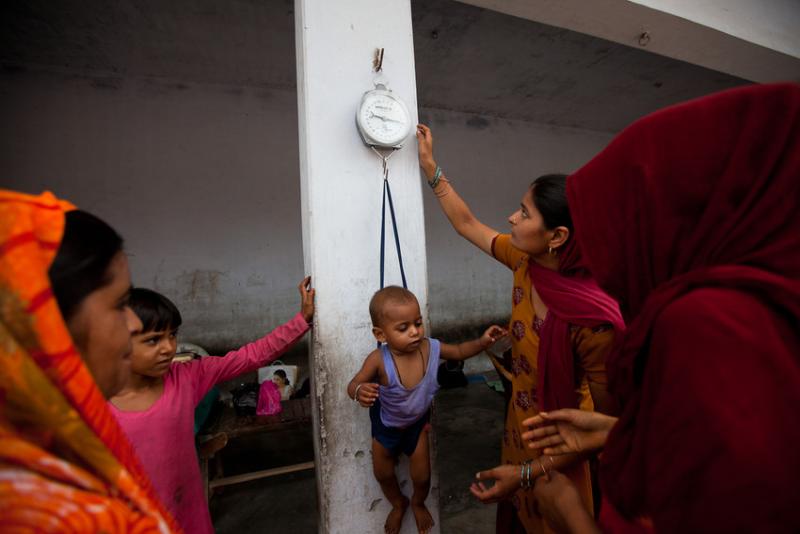Where We Work
See our interactive map


Note: This post originally appeared in the Frontline Health Workers Coalition Blog.
Sunita Kumari was struggling to get her message across. Working as an auxiliary nurse midwife in Gumla District, Jharkhand, India, she kept trying to mobilize the women of Toto, a village of 941 houses, to participate in Village Health and Nutrition Days. Despite her best efforts, she had little success.
Complicating matters, influential village elders failed to see the point: “We never went to the health subcenter and our children were not vaccinated,” they would tell Sunita, “but still they are healthy and fine.”
Sunita knew that Village Health and Nutrition Days offered more than vaccinations. But low attendance meant that few women and children were receiving health and nutrition services, and the number of malnourished children was high. Throughout India, 46% of children under age 3 are undernourished, according to the National Family Health Survey, and 70% of pregnant women are anemic.
How could more women be convinced to take advantage of this service?
India’s National Rural Health Mission called for Village Health and Nutrition Days to play an important role in community health by offering a full range of maternal and child health and nutrition services, but frontline workers like Sunita were sometimes hindered by a lack of skills, equipment, and supportive supervision.
The Vistaar Project, funded by USAID and led by IntraHealth International, worked with the governments of Jharkhand and Uttar Pradesh to improve the coverage and quality of Village Health and Nutrition Days. Together they oriented health workers on guidelines, facilitated joint planning, promoted data use, strengthened supervision, and enhanced community awareness.
Frontline health workers were essential to this process.
“Training on Village Health and Nutrition Days and interpersonal communication skills has increased my confidence and dedication,” said Sunita, “and now I am able to provide my services in an effective manner.”
Orientation sessions for government officials helped clarify health workers’ roles and responsibilities and streamlined supplies. This in turn helped community members start getting regular services and supplies during Village Health and Nutrition Days. In addition, training for frontline workers on interpersonal communication helped make home visits more effective—now they could make a strong case for taking advantage of the services, and they succeeded in improving attendance.
These days, said one woman in Toto, “we avail health check-ups and get medicines at the Village Health and Nutrition Days. It is easier for us to get health and nutrition services for ourselves and our children.” Another woman in Toto commented that “we attend Village Health and Nutrition Days to get health check-ups and vaccinations done, and take-home rations. We gain a lot from these sessions.”
Here are just a few outcomes from Jharkhand’s 15 participating districts and Uttar Pradesh’s 8 participating districts, which have a total population of nearly 40 million people:
There is a wealth of results from this collaboration between the Indian and U.S. governments. To learn more, check out these resources:
The Vistaar Project (2006–2012) was led by IntraHealth International and funded by USAID. This six-year, $25-million initiative assisted the Government of India and state governments of Uttar Pradesh and Jharkhand in taking knowledge to practice in order to improve maternal, newborn, and child health, and nutritional status. In addition, the project supported health workforce and health systems strengthening initiatives in both states as well as in the state of Bihar.
Photo of Sunita Kumari by Geeta Sharma, courtesy of IntraHealth International. Photo of a child being weighed during a Village Health and Nutrition Day at Chakvali Subcenter by Trevor Snapp, courtesy of IntraHealth International.
Get the latest updates from the blog and eNews




